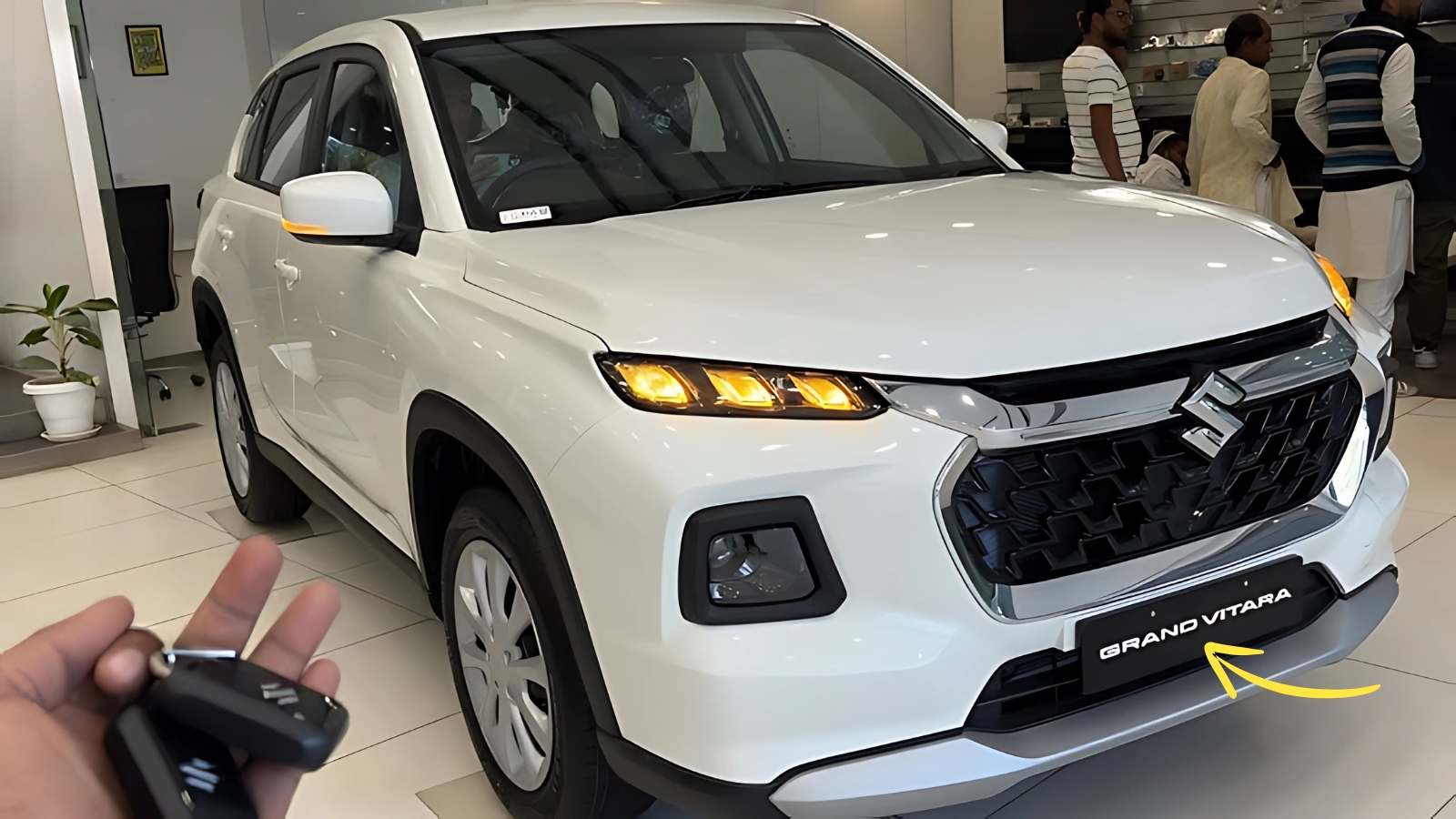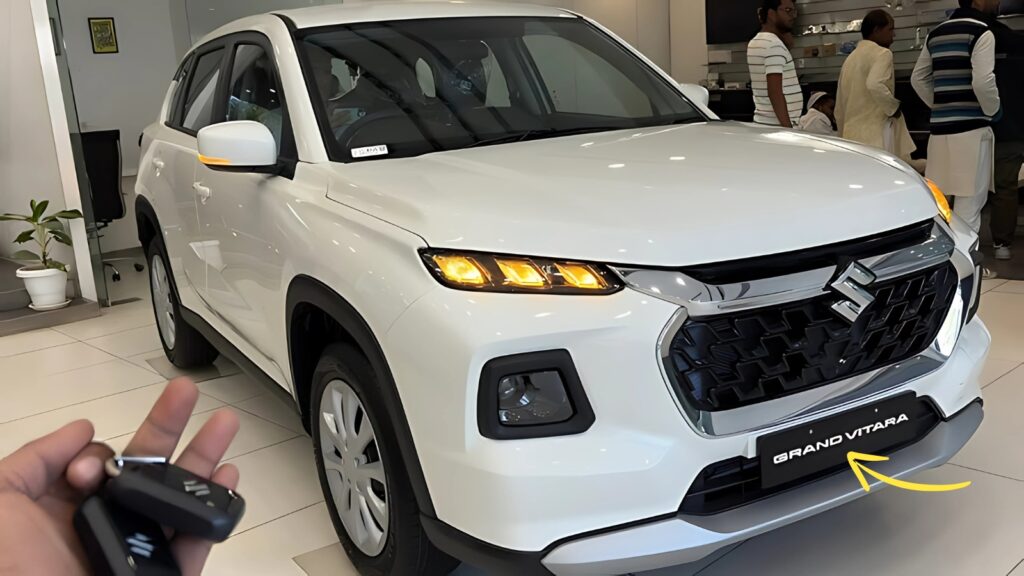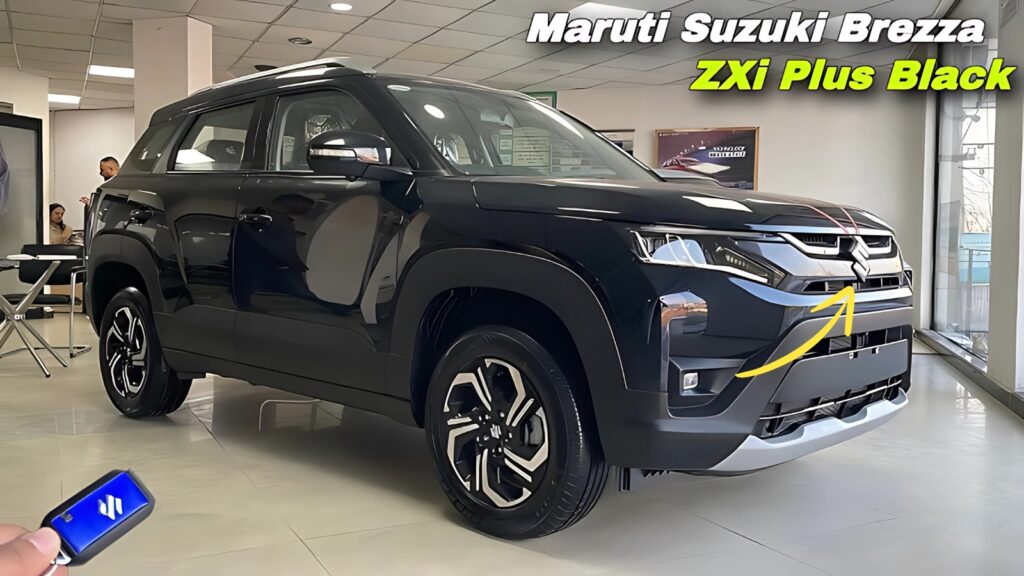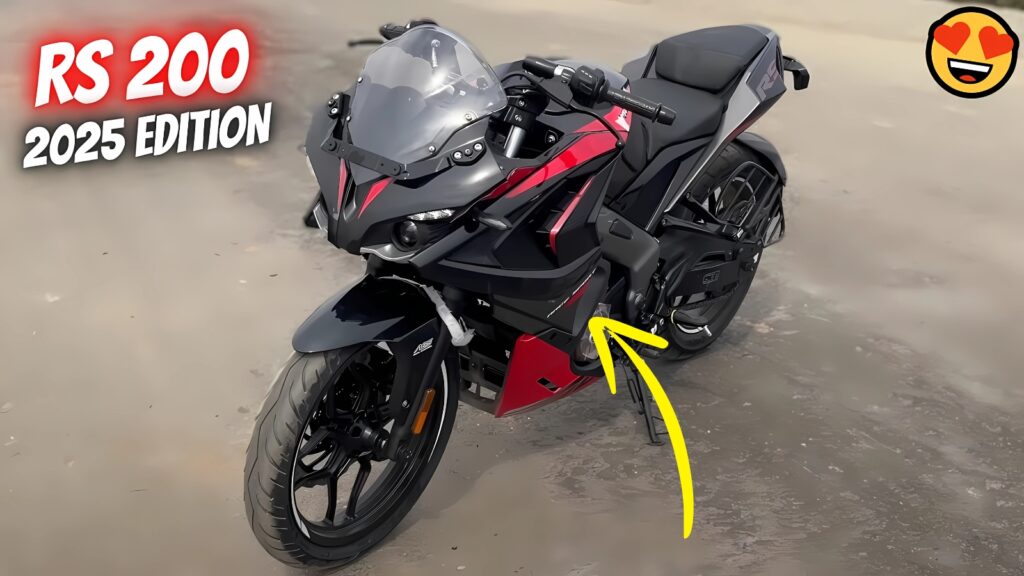Maruti Grand Vitara: There’s something oddly fascinating about the Maruti Grand Vitara’s journey through 2025. Here’s a vehicle that crossed the impressive 3 lakh sales milestone in just 32 months, yet somehow managed to drop from selling 15,784 units in January to barely 5,197 units by May. It’s the automotive equivalent of winning a marathon but then struggling to finish a casual jog.
Sales Rollercoaster: The Numbers Tell Two Stories
June 2025 brought 6,828 Grand Vitara sales – a figure that sounds respectable until you realize it represents a 29% year-on-year decline. This isn’t just a minor dip; it’s a significant trend that’s been building throughout the year. The steady slide from January’s strong start to May’s concerning low point suggests something more complex than seasonal fluctuations.
What makes these declining numbers particularly puzzling is the recent achievement of crossing 3 lakh cumulative sales. Maruti proudly announced becoming the fastest C-segment SUV to reach this milestone, yet monthly performance tells a different story. It’s like celebrating a career achievement while your current project struggles to gain traction.
The 27.4% month-on-month drop from April to May 2025 especially stands out. When you’re already operating at reduced volumes, such dramatic declines become impossible to ignore. The Grand Vitara’s sales trajectory resembles a company that had incredible early success but now faces the challenge of sustaining momentum in an increasingly competitive environment.
These figures become more concerning when compared to segment rivals. While the Hyundai Creta maintains consistent volumes above 15,000 monthly units, the Grand Vitara struggles to cross the 7,000 mark. For a vehicle positioning itself as a premium offering, these numbers suggest market dynamics have shifted unfavorably.

2025 Updates: Playing Catch-Up with Features
Maruti’s 2025 refresh demonstrates clear acknowledgment that the Grand Vitara needed enhancement beyond its initial hybrid appeal. The introduction of six airbags as standard across all variants addresses previous safety criticisms, while new features like power-adjustable driver seats and LED cabin lighting show attention to premium expectations.
The expansion of panoramic sunroof availability to lower-spec variants represents smart positioning. Previously restricted to top-end Alpha and strong-hybrid variants, this desirable feature now reaches Zeta, Alpha, Zeta+, and Alpha+ trims. Sometimes the most effective updates involve democratizing premium features rather than inventing new ones.
Electronic parking brake addition to automatic variants brings modern convenience that rivals have offered for years. The fact that this feature was missing previously highlights how the Grand Vitara’s initial development prioritized hybrid technology over comprehensive feature parity with competition.
New 17-inch alloy wheel designs refresh the visual appeal without requiring major styling overhauls. These incremental improvements suggest Maruti’s confidence in the basic design while acknowledging the need for freshness in a rapidly evolving segment.
Hybrid Technology: The Double-Edged Sword
The Grand Vitara’s hybrid positioning remains its most distinctive characteristic and potentially its biggest challenge. The strong-hybrid system achieving 27.97 kmpl provides genuine efficiency advantages, yet this same technology creates pricing complications that may alienate traditional Maruti buyers.
The mild-hybrid setup producing 103 hp from the 1.5-liter K15C engine offers more familiar performance characteristics while maintaining decent fuel efficiency at 20-21 kmpl. This configuration probably appeals to buyers wanting hybrid benefits without the complexity or cost of the strong-hybrid system.
CNG availability adds another efficiency dimension, though the temporary delisting and re-launch of CNG variants suggests supply chain or regulatory complications. When customers specifically seek alternative fuel options, product availability becomes crucial for maintaining sales momentum.
The strong-hybrid’s 116 hp combined output feels adequate for urban driving but lacks the enthusiasm many SUV buyers expect. In a segment where perceived performance matters almost as much as actual capability, this powertrain configuration might seem underwhelming compared to conventional turbo-petrol alternatives.
Market Positioning Challenges
The Grand Vitara’s pricing strategy creates interesting dilemmas. Starting at ₹11.42 lakh, it costs more than traditional Maruti offerings but less than obvious premium alternatives. This positioning requires justification through features and efficiency rather than brand prestige or performance credentials.
Competition arrives from multiple directions. The Toyota Hyryder shares the same platform and hybrid technology while carrying Toyota’s reliability reputation. The Hyundai Creta offers more conventional appeal with stronger brand positioning. The Kia Seltos provides European design flair and feature richness.
The Grand Vitara succeeds when buyers prioritize fuel efficiency and Maruti’s service network advantages. It struggles when customers seek driving excitement, premium cabin ambiance, or standout styling. This creates a relatively narrow target audience in an increasingly diverse segment.
Recent sales trends suggest the initial hybrid novelty may be wearing off. Early adopters who specifically wanted hybrid technology have already purchased, leaving the Grand Vitara to compete on broader merits where its advantages become less obvious.
Bajaj Pulsar RS 200 – Full dangerous design bike launch with powerful engine
Production and Supply Reality
The temporary CNG variant delisting followed by re-launch hints at production complexity. Managing multiple powertrain options – mild-hybrid, strong-hybrid, CNG, and AWD – within the same manufacturing system creates logistical challenges that single-engine rivals avoid.
Export commitments to Latin America add another variable to production planning. While exports demonstrate international appeal, they also compete with domestic supply during periods of strong local demand. Balancing these requirements becomes increasingly difficult as global markets develop their own preferences.
The three recalls since launch suggest the complexity of hybrid technology integration. While none were catastrophic, they highlight the challenges of introducing advanced powertrains through traditional manufacturing processes designed for simpler mechanical systems.
Maruti Grand Vitara Future Prospects and Strategic Direction
The upcoming seven-seater Grand Vitara variant represents Maruti’s attempt to expand the model’s appeal. However, this addition risks complicating an already complex product lineup unless carefully positioned to avoid internal competition with existing offerings.
Electric variant development through the e-Vitara project shows long-term strategic thinking. However, this also suggests potential cannibalization of hybrid variants as buyers increasingly view electrification as the ultimate goal rather than hybrid technology as a permanent solution.
The Grand Vitara’s story illustrates the challenges of pioneering new technology in conservative markets. While hybrid efficiency provides genuine benefits, translating these advantages into sustained sales success requires more than technical superiority. Market education, competitive pricing, and compelling overall value propositions determine long-term viability.
Success came quickly for the Grand Vitara, but sustaining that momentum demands continuous evolution in an increasingly sophisticated and competitive compact SUV landscape.


